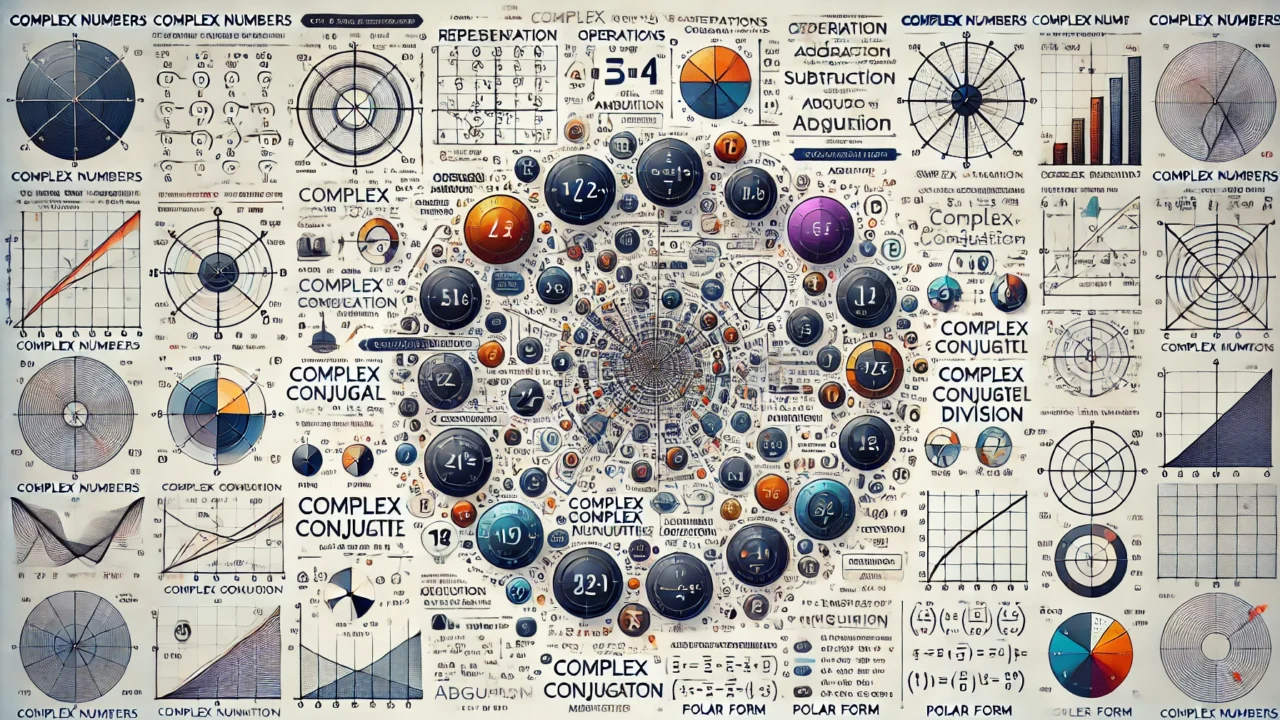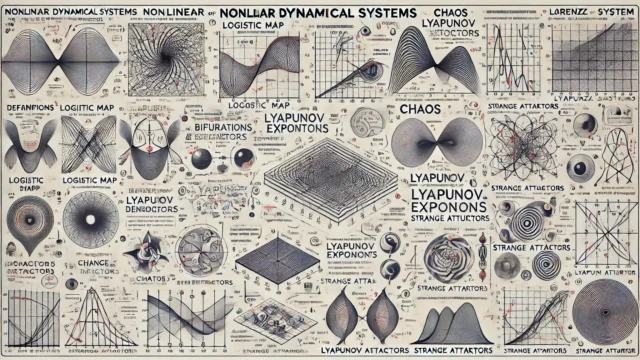Complex Numbers: Detailed Explanation, Proofs, and Derivations
Complex numbers extend the concept of one-dimensional real numbers to the two-dimensional complex plane by introducing an imaginary unit. A complex number is expressed in the form \( z = a + bi \), where \( a \) and \( b \) are real numbers, and \( i \) is the imaginary unit with the property \( i^2 = -1 \).
The Complex Plane
The complex plane is a way of visualizing complex numbers. The horizontal axis represents the real part, and the vertical axis represents the imaginary part. A complex number \( z = a + bi \) can be represented as the point \( (a, b) \) in the complex plane.
Operations on Complex Numbers
Addition and Subtraction
For two complex numbers \( z_1 = a_1 + b_1i \) and \( z_2 = a_2 + b_2i \):
$$ z_1 + z_2 = (a_1 + a_2) + (b_1 + b_2)i $$
$$ z_1 – z_2 = (a_1 – a_2) + (b_1 – b_2)i $$
Multiplication
The product of two complex numbers \( z_1 \) and \( z_2 \) is given by:
$$ z_1 z_2 = (a_1 + b_1i)(a_2 + b_2i) = (a_1a_2 – b_1b_2) + (a_1b_2 + a_2b_1)i $$
Division
The division of \( z_1 \) by \( z_2 \) is given by:
$$ \frac{z_1}{z_2} = \frac{a_1 + b_1i}{a_2 + b_2i} = \frac{(a_1 + b_1i)(a_2 – b_2i)}{a_2^2 + b_2^2} = \frac{(a_1a_2 + b_1b_2) + (b_1a_2 – a_1b_2)i}{a_2^2 + b_2^2} $$
Complex Conjugate
The complex conjugate of \( z = a + bi \) is \( \overline{z} = a – bi \). The product of a complex number and its conjugate is a real number:
$$ z \overline{z} = (a + bi)(a – bi) = a^2 + b^2 $$
Modulus and Argument
The modulus of a complex number \( z = a + bi \) is its distance from the origin in the complex plane, given by:
$$ |z| = \sqrt{a^2 + b^2} $$
The argument of \( z \), denoted as \( \arg(z) \), is the angle the line from the origin to \( z \) makes with the positive real axis, measured in radians.
Polar Form
A complex number can also be expressed in polar form as:
$$ z = r(\cos \theta + i \sin \theta) $$
where \( r = |z| \) and \( \theta = \arg(z) \). Using Euler’s formula, this can be written as:
$$ z = re^{i\theta} $$
De Moivre’s Theorem
De Moivre’s theorem states that for any real number \( \theta \) and any integer \( n \):
$$ (re^{i\theta})^n = r^n e^{in\theta} $$
This is useful for finding powers and roots of complex numbers.
Proof of De Moivre’s Theorem
We start with the polar form of a complex number:
$$ z = r(\cos \theta + i \sin \theta) $$
Raising both sides to the \( n \)-th power, we use the binomial theorem:
$$ z^n = [r(\cos \theta + i \sin \theta)]^n $$
Expanding the right-hand side using the binomial theorem and Euler’s formula:
$$ z^n = r^n (\cos n\theta + i \sin n\theta) = r^n e^{in\theta} $$
This concludes the proof of De Moivre’s theorem.





